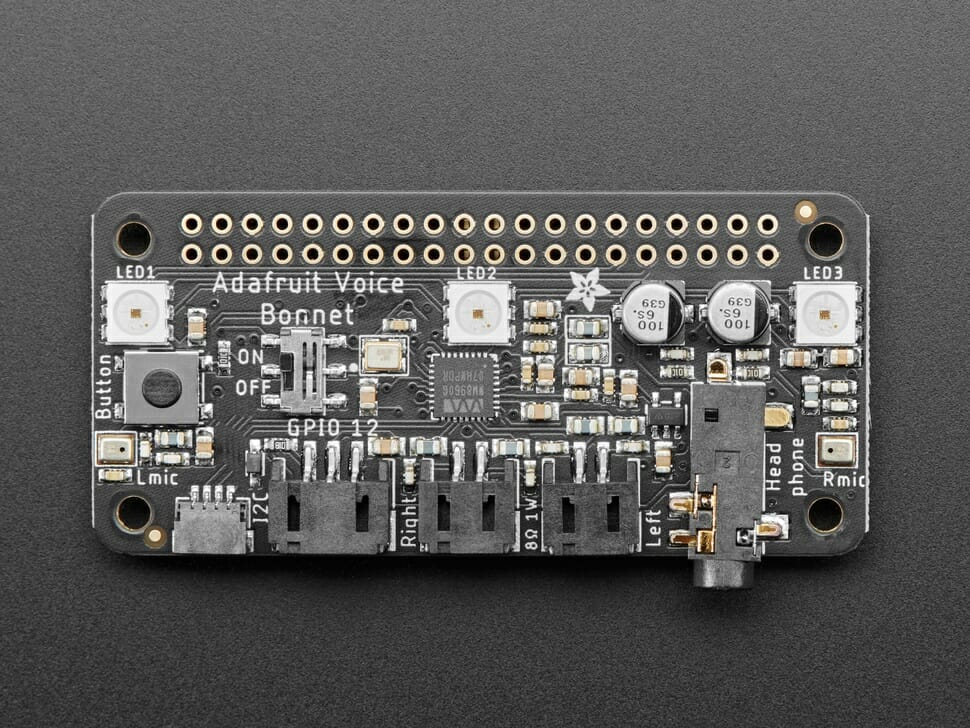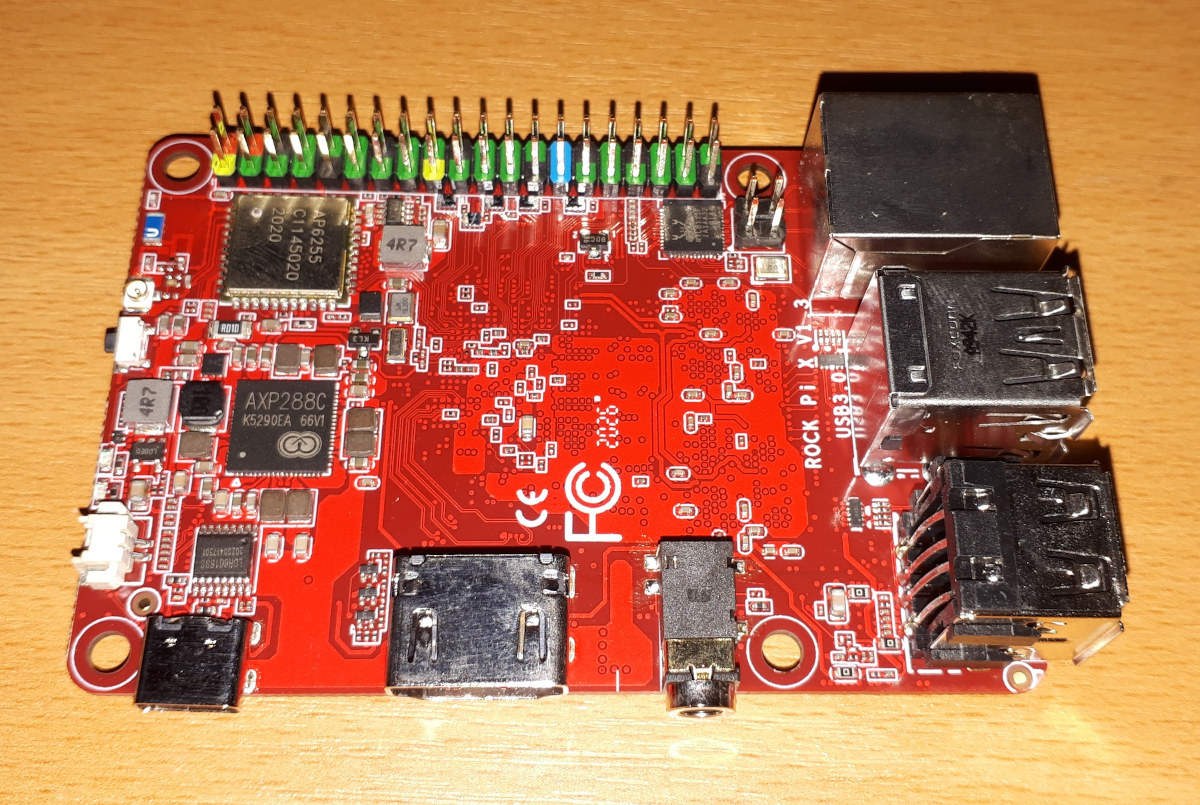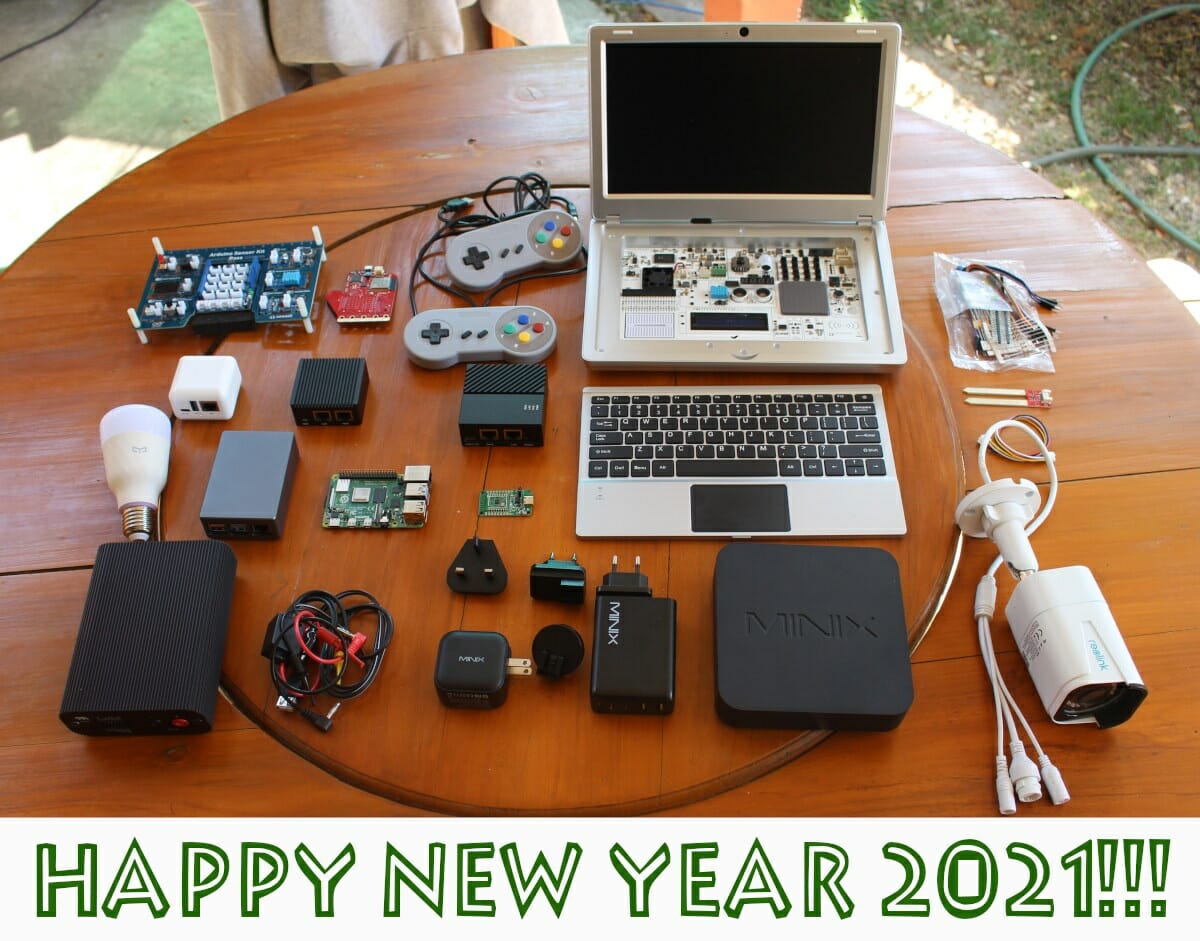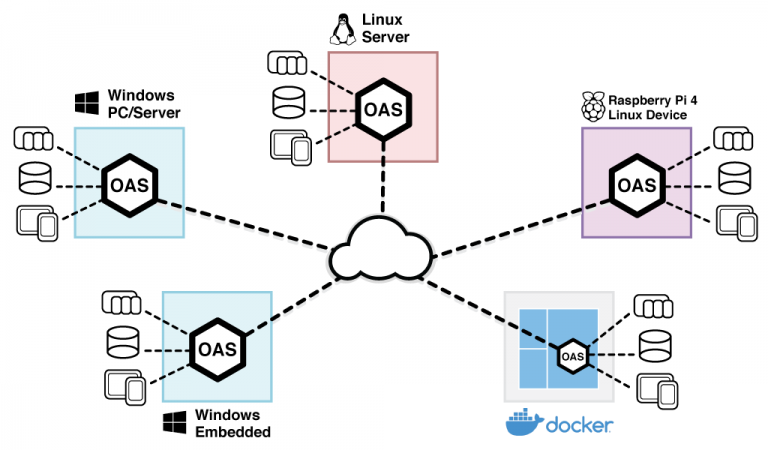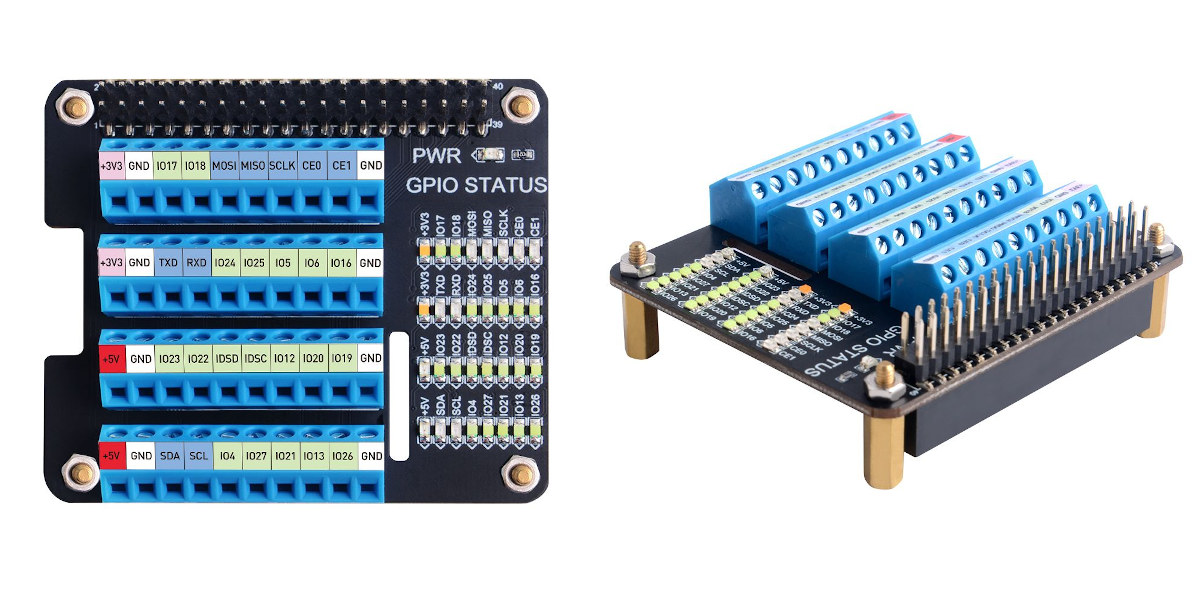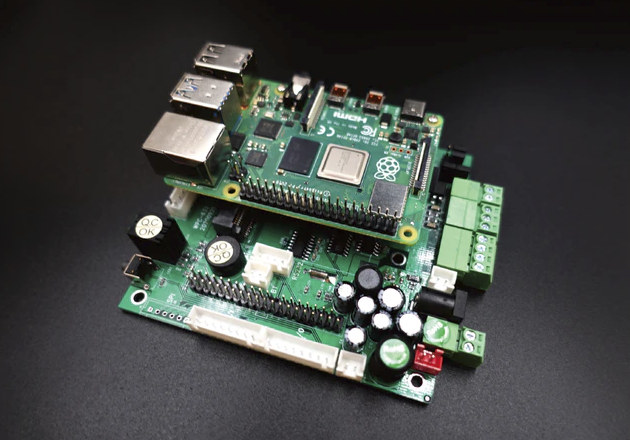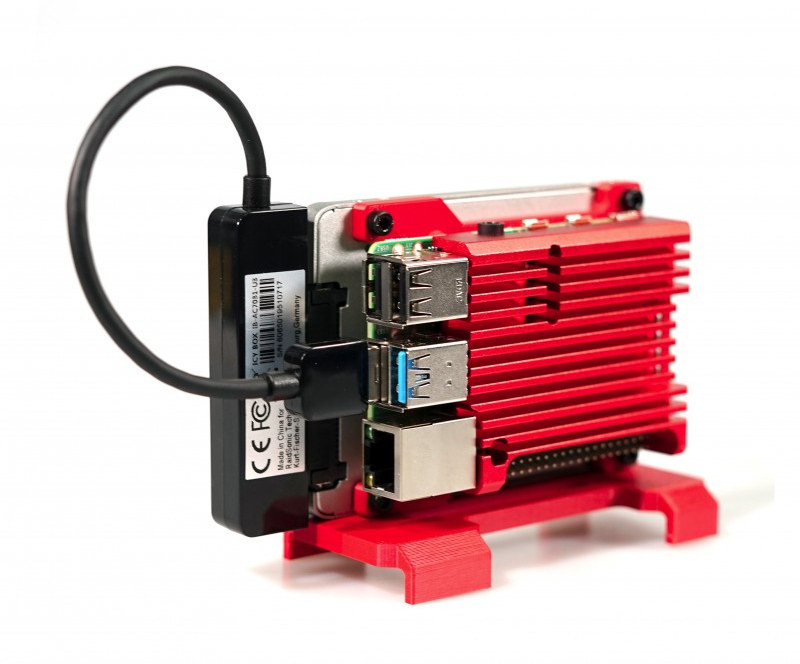VSCP (Very Simple Control Protocol) is an open-source IoT framework that works on development boards like Arduino or Raspberry Pi, and lets you control IoT home automation tasks. The framework is highly scalable, has a very low footprint, and as such is specially designed for resource-limited devices. VSCP is an open-source standard protocol for m2m, IoT and other remote control and measurement applications. It enables simple, low-cost devices to be networked together with high-end computers and/or to work as an autonomous system, whatever the communication media is. The VSCP Protocol has two levels: Level 1 and Level 2. The protocol was primarily used in CAN networks (that is Level 1 for tiny microcontrollers) because CAN is cheap and reliable with high efficiency. However, VSCP can be used for faster transport layers such as TCP/IP, so here comes Level 2 which achieves better performance. We have already seen Souliss, an open-source […]
Adafruit Voice Bonnet is meant for DIY Raspberry Pi Smart Speakers
Adafruit Voice Bonnet features two speakers and two mics, that can be used as an audio-voice interface for Raspberry Pi SBC to create a DIY smart speaker or other audio product. The voice bonnet can work with any Raspberry Pi from Pi Zero up to Pi 4, with 40-pin 2 x 20 connector. Two speaker outputs of the voice bonnet have a power rating of 1 Watt. The voice bonnet contains 3.5 mm stereo outputs, headphone stereo, or line-out audio. The Adafruit voice bonnet has an on-board WM8960 low-power stereo codec that uses I2S digital audio for both input and output. The WM8960 codec has a dual analog input, it consists of a left mic and a right mic. The codec integrates a complete microphone interface and a stereo headphone driver. Adafruit says “For DIY speakers, solder any 1W+ speaker to one of these JST 2-PH cables. If you’d like […]
Rock Pi X Review – An Atom x5 SBC running Windows 10 or Ubuntu 20.04
The ROCK Pi X is the first x86 SBC (single board computer) from Radxa and resulted from repeated enquiries about running Windows on their earlier ROCK Pi 4. The ROCK Pi X comes in two models (Model A and Model B) with each model having either 1GB, 2GB, or 4GB of RAM and either 16GB, 32GB, 64GB, or 128GB of eMMC storage. Additionally, the Model B includes WiFi and Bluetooth together with supporting Power over Ethernet (PoE) although this requires an additional HAT. Both Seeed Studio and Radxa provided samples and in this review, I’ll cover some performance metrics from both Windows and Ubuntu and also discuss the thermals. Rock Pi X Hardware Overview The ROCK Pi X is similar in size to a Raspberry Pi board… but with slightly different ports and port locations even when compared to the Raspberry Pi 4. It is physically slightly larger than its […]
Year 2020 in review – Top ten posts and stats
It’s this time of the year when we look back at what happened, and what may be next. 2020 did not pan out as planned in more ways than one, but there were still some interesting developments. Based on 2019 announcements, 2020 was promising to be an exciting year for Amlogic and Rockchip with the expected launch of RK3588 and S908X high-end processors for 8K capable devices, but we’ll have to wait for 2021 for this to happen. Instead, the most interesting processor of the year from the Allwinner, Amlogic, and Rockchip offerings was probably Amlogic S905X4 processing adding AV1 hardware decoding. As pointed out in our “RISC-V 2020 highlights” post, it was a fairly eventful year for RISC-V architecture, although there’s still a long road ahead, especially for application processors. We had seen some general-purpose and Bluetooth RISC-V MCUs in 2019, but 2020 saw the launch of the first […]
OAS software now supports Raspberry Pi 4 for Industry 4.0 solutions
A week before the announcement that Raspberry Pi supported industrial customers through several new services, including a dedicated website for the industry and the Raspberry Pi Approved Design Partners program, OAS announced support for deploying the Open Automation Software Platform on Raspberry Pi 4 with 4GB or 8GB of memory. The solution enables the low-cost scaling of operations and “reliable on-site data logging in remote locations with limited power and connectivity”. As you may know… or not, OAS has provided IIoT solutions for the last 20 years and is widely used since the company offers secure moving of data from one location to another. Network Configuration Possibilities The platform offers support for Windows PC/Server, Windows Embedded, Windows IoT, Linux Server, Virtual Machines (Win/Linux), Raspberry Pi 4, and Docker Containers (Win/Linux). “These systems can be networked together and share data creating endless network configuration possibilities”. The OAS platform running on the […]
GPIO screw terminal HAT for Raspberry Pi adds LEDs and GPIO markings
Screw terminals provide a more secure way of connecting wires to products that may be exposed to vibrations and shocks, and in the past, we’ve seen Pi-oT MKR module enclosure that routes Raspberry Pi GPIO’s to screw terminals, and also happens to include a breadboard area. 52Pi has come up with another product with screw terminals designed for Raspberry Pi boards, but more geared towards education as the company’s “GPIO screw terminal HAT for Raspberry Pi” exposes all I/Os from the 40-pin expansion headers and adds an LED to each pin. That means you don’t need to search for “Raspberry Pi pinout diagram” on the web or reach out for a printout each time you plan to wire your project as the main function of each pin is clearly marked on each screw terminal. It’s an easy way to teach about GPIO since the LED will be turned on and […]
Industrial 5G/4G Base Shield supports Raspberry Pi, Jetson Nano, other SBC’s (Crowdfunding)
Akari, a start-up based in Japan, has designed an industrial base shield for Raspberry Pi 4/3/Zero, Jetson Nano, Rock Pi 4, and other compatible single board computers. The board allows users to create industrial gateways integrating wireless modules (5G, 4G LTE, WiFi 6 and/or LoRa), a neural compute stick, relay module, and digital inputs, RS232/RS422/RS485, and more. Industrial 4G/5G Base Shield specifications: Compatible SBCs – Raspberry Pi 4, Raspberry Pi 3, Raspberry Pi Zero, Jetson Nano, Rock Pi 4, UP Board, and probably other SBCs with a similar form factor I/Os Build-in relay module and digital input (also reserve dry contacts and wet contacts) Digital input / digital output RS232, RS485, RS422 Internal headers USB host port for connection with Raspberry Pi Expansion M.2 socket for 5G Mini PCIe socket for 4G LTE, WiFI6, or LoRa SIM card socket Internal bay for Intel Neural Compute Stick Misc – RTC module […]
TerraPi modular case system for Raspberry Pi supports multiple SSD’s, DIN rail, horizontal & vertical mounts
We already have many cases for Raspberry Pi SBC’s. Besides the official one, we already have third-party enclosures such as a KKSB compact fanless metal case for Raspberry Pi 4, Argon One enclosure brings all ports from the SBC to the side, as well as a variant for M.2 SSD’s, and even DIN rail enclosures. But here are more options as INUX3D, a design studio and 3D printing facility based in Slovakia, decided to create its own 3D printed modular case system for Raspberry Pi. The TerraPi module enclosure system supports passive and active cooling, up to two 2.5-inch SSD’s or HDD’s, as well as horizontal or vertical mounting, and there’s also a DIN rail option. Apart from the fanless model targeting uniquely the Raspberry Pi 4 SBC, all TerraPi enclosures also work with Raspberry Pi 3 B/B+ models and are especially suited for people wanting to use the board […]



